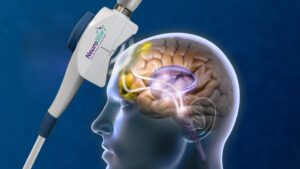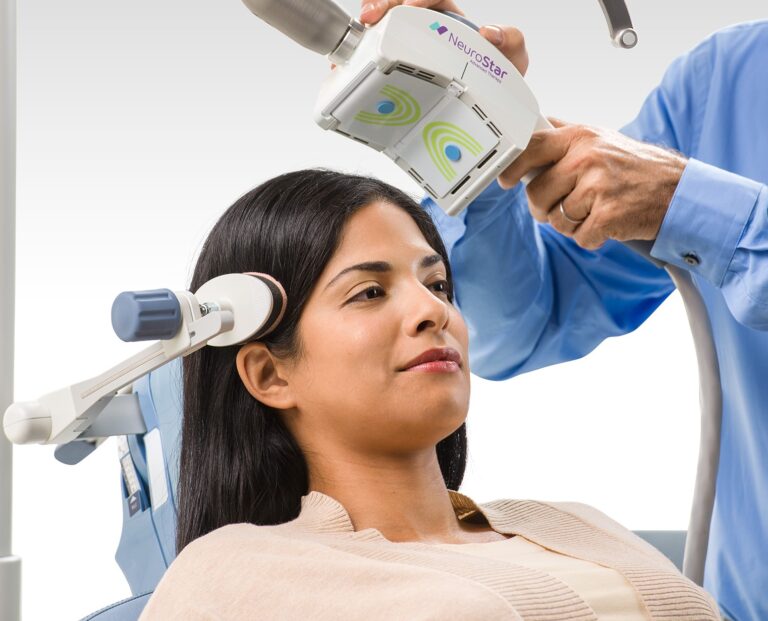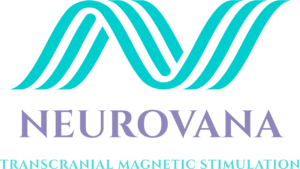NeuroStar® TMS Therapy


About NeuroStar® TMS Therapy
NeuroStar® uses transcranial magnetic stimulation (TMS) to target key underactive areas of the brain that are believed to cause depression. TMS is not ECT (electroconvulsive therapy).
The exact cause of depression is still unknown; however, the leading scientific research suggests that depression is likely caused by an imbalance of neurotransmitters, which are chemical messengers in the brain that send signals between the cells.
What is NeuroStar® Advanced Therapy (TMS)?
During a NeuroStar® treatment session, a special magnet like the ones utilized in MRI machines is used to stimulate nerve cells in the area of the brain that has been linked to mood control. The magnetic pulses from the NeuroStar® machine are believed to have positively effect neurotransmitter levels in the brain, making long-term relief from depression possible.
Treatment with NeuroStar® Advanced Therapy is easy:
– Therapy sessions are conducted in your local provider’s office
– No need to take time off – resume your normal activities after your session
– You are conscious and alert throughout your treatment session
– NeuroStar® treatment will not affect your memory or sleep
– NeuroStar® is covered by nearly all major health insurance plans
With over three million treatments delivered so far, the results are in: NeuroStar® Advanced Therapy for Mental Health makes a future without depression a reality. Relief and remission from depression is possible.
How NeuroStar® TMS Therapy Works
Here’s what you can expect from a NeuroStar Advanced Therapy (TMS) session:
Your session starts with you reclining comfortably in the treatment chair. Then, the small curved magnetic coil of the NeuroStar® machine will be positioned lightly on your head.
NeuroStar® delivers targeted magnetic stimulation directly to underactive areas of your brain. During treatment you will hear a clicking sound and feel a tapping sensation on your head.
NeuroStar® Advanced Therapy: Depending on your doctor’s recommendation, in-office treatment with NeuroStar® TMS Therapy takes approximately 19-37 minutes and is typically administered 5 days a week for 4-6 weeks.*
You can resume normal activities immediately. Because there are no effects of NeuroStar® on alertness or memory, you can drive yourself to and from your treatment sessions.

See if you're eligible
Call us for a free screening
(657) 227-2274
FAQ
Frequently asked questions about NeuroStar® TMS treatment at Inpsycht Services
What is transcranial magnetic stimulation (tms)
Transcranial magnetic stimulation, often referred to as TMS is a noninvasive procedure that uses magnetic fields to stimulate nerve cells in the brain to improve symptoms of depression. TMS is typically used when antidepressant medications haven’t been effective, have ceased working, or as an alternative to medication.
How does tms work?
TMS involves delivering magnetic pulses to specific parts of the brain.
how long is tms treatment?
A typical initial course of treatment is about 19-37 minutes daily over 4-6 weeks.
Is TMS Therapy covered by my insurance?
A vast majority of commercial and Medicare plans have recognized the effectiveness of treating depression with TMS Therapy and now cover TMS as part of their plans.
Is TMS Therapy a good alternative for patients who cannot tolerate the side effects of antidepressant medications?
TMS does not circulate in the blood throughout the body, so it does not have side effects like weight gain, sexual dysfunction, nausea, dry mouth, sedation, etc. The most common side effects reported during clinical trials were headache and scalp discomfort —generally mild to moderate—occurring less frequently after the first week of treatment.
Is TMS Therapy like other alternative therapies that use magnets to treat some illnesses?
No. TMS Therapy involves a unique method of using pulsed magnetic fields for a therapeutic benefit. The intensity of the magnetic field is similar to that of an MRI. These techniques differ radically from the popular use of low intensity, static magnetic fields. Those products deliver weak and undirected static fields that are not capable of activating brain cells. The activation and stimulation of brain cells is a key part of why TMS is so effective.
